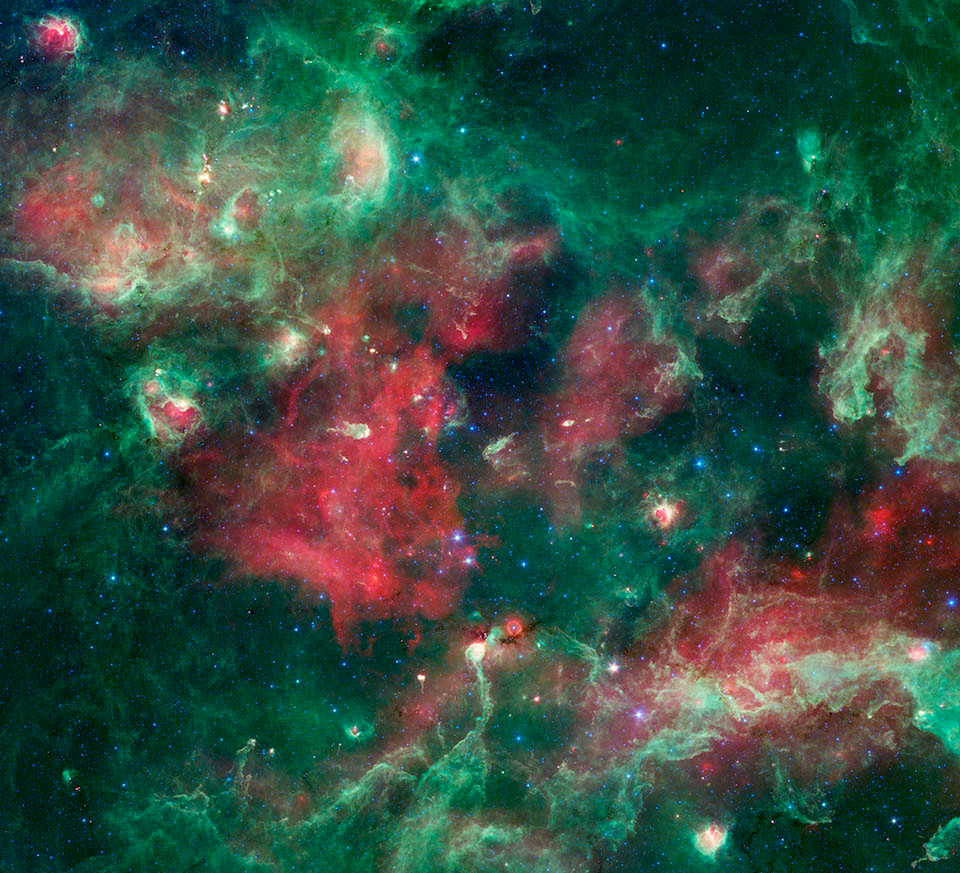MarkBour wrote:From my limited learning through APOD, I get the impression that when you find a dark cloud in outer space, you have a chance for it to collapse and form a star. But are there clouds out in space that can gravitationally collapse but will never form a star because they contain lousy fuel? For instance, are there clouds of sulfur, or iron, or just a messed-up mixture of crud that will not ignite fusion? I suppose in some sense, the existence of planets proves that to be the case, but in our system, those contaminants did not pose a serious problem.
My own understanding of the necessary prerequisites for star formation is very limited.
Nevertheless, I googled "dust clouds sterile fertile for star formation" and found an extremely hard to read paper called
Characteristic structure of star-forming clouds.
Philip C. Myers wrote:
Abstract. This paper gives a new way to diagnose the star-forming potential of a
molecular cloud region from the probability density function of its column density (Npdf).
It gives expressions for the column density and mass profiles of a symmetric
filament having the same N-pdf as a filamentary region.
The central concentration of this characteristic filament can distinguish regions and
an quantify their fertility for star formation. Profiles are calculated for N-pdfs which
are pure lognormal, pure power law, or a combination. In relation to models of singular
polytropic cylinders, characteristic filaments can be unbound, bound, or collapsing
depending on their central concentration.
Such filamentary models of the dynamical state of N-pdf gas are more
relevant to star-forming regions than are models of spherical collapse. The star
formation fertility of a bound or collapsing filament is quantified by its mean mass
accretion rate when in radial free fall.
For a given mass per length, the fertility increases with the filament mean column density
and with its initial concentration. In selected regions the fertility of their characteristic
filaments increases with the level of star formation.
Cygnus X, a nearby star factory. NASA/JPL-Caltech/Harvard-Smithsonian CfA
Okay. This is what I
think this paper says. The star-forming ability of a dust cloud depends mostly on its filaments, and how concentrated and self-gravitating the filaments are. If, for whatever reason, the filaments aren't very concentrated, then the chances for star formation are smaller.
Take a look at the picture at right, which shows a relatively nearby (
4,500 light years) fertile site of star formation in Cygnus. You can see that there are many filaments and other elongated structures in the picture. But now locate a small, round, red object with a blue dot inside it in the lower half of the picture. To me it seems obvious that this is a massive newborn star, which might possibly still be forming. Can you see that below this massive star is a very dark, relatively thin, elongated filament? I would definitely guess that the concentrated filament and the massive young star are related. Also note what is possibly an even younger proto-star forming to the lower left of the strikingly red round object.
So all in all, I don't believe that trace amounts of sulfur or any other element is what impedes or aids star formation, but the level of concentration and self-gravitating ability of dusty filaments.
That said, there must be mechanisms for star formation that don't involve dust at all. Consider the very first stars in the very young universe. At that time dust wouldn't have existed at all, because dust - elements heavier than hydrogen and helium - are made inside (previous generations of) stars.
Presumably, the entire universe at that time was small enough, gas-rich
enough and "concentrated" enough to support star formation without the aid of dust.
Ann
 W5: The Soul of Star Formation
W5: The Soul of Star Formation